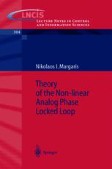Search
Search Results
-
Dependability of Mobile Robots in Direct Interaction with Humans
Operating interactive mobile robots in unmodified natural environments such as in museums or at exposition areas impose requirements on the robots,...
-
Next Generation Teach Pendants for Industrial Robots
Teach pendants for industrial robots have sometimes been quite rudimentary in the past, and often enough users had to learn to cope with whatever is...
-
Adaptive and Distributed Coordination Algorithms for Mobile Sensing Networks
Consider n sites evolving within a convex polygon according to one of the following interaction laws: (i) each site moves away from the closest other...
-
4 Co-existence: Physical Interaction and Coordinated Motion
Co-existence an co-operation between a human and a machine which can move and act in an autonomous mode involves a form of interaction which goes...
-
The Robotic Bar – An Integrated Demonstration of a Robotic Assistant
Coming out of the labs, the first robots are currently appearing on the consumer market. Initially they target rather simple application scenarios...
-
Flocking in Teams of Nonholonomic Agents
The motion of a group of nonholonomic mobile agents is synchronized using local control laws. This synchronization strategy is inspired by the early...
-
Learning Behavioral Sequences by Means of Nonlinear Dynamics
We present a software architecture for the behavioral organization of a mobile robot which is entirely based on nonlinear dynamical systems. The...
-
The Control Architecture of Care-O-bot II
Robot assistants act in dynamic environments and have to cope with changing situations: they must be able to sense the world and to control their...
-
Robotic Home Assistant Care-O-bot II
Technical aids allow elderly and handicapped people to live independently in their private homes as long as they wish. As a contribution to these...
-
Statistical Recognition of Motion Patterns
One key prerequisite for a machine to interact intelligently with people is its ability to recognize humans as interaction partners and to understand...
-
1 Introduction
The class of block-oriented nonlinear models includes complex models which are composed of linear dynamic systems and nonlinear static elements....
-
Optimal Control of Differential-Algebraic Inclusions
In this paper we consider the following dynamic optimization problem ( P ) governed by differential-algebraic inclusions:...
-
A Continuous Control Mechanism for Uncertain Nonlinear Systems
The control of uncertain nonlinear systems is a topic that continues to challenge control theoreticians. This topic is also of practical importance...
-
On Impulses Induced by Singular Perturbations
The possibility that a singularly perturbed controlled dynamics generates impulses in a slow dynamics coupled to it, is investigated. A scheme for...
-
10. Main sychronization
It was made clear in Chapter 9 that the second order type-II loop operates either in saturated or in unsaturated mode. In this chapter, only the main...
-
4. Main synchronization
In this chapter the main synchronization of the first order PLL is discussed. At first, we perform the local stability analysis of the main...
-
8. Main synchronization
In the present chapter the main synchronization of the second order type-I loop is treated. At first, the local stability analysis is presented and...
-
15. SIMULATION STUDIES AND REAL-TIME CONTROL USING MATLAB/SIMULINK
The MATLAB programs for simulating the generalized minimum variance (GMV) controller with the CE assumption as well as its dual version are presented...
-
13. ROBUSTNESS AGAINST UNMODELED EFFECTS AND SYSTEM STABILITY
Various engineering systems are described by complex dynamic models that include nonlinearities, time-varying parameters and high-order terms....
-
6. DUAL POLE-PLACEMENT CONTROLLER WITH DIRECT ADAPTATION
The following two problems have to be solved in order to extend the adaptive dual control approach to direct adaptive pole-placement control systems:...
